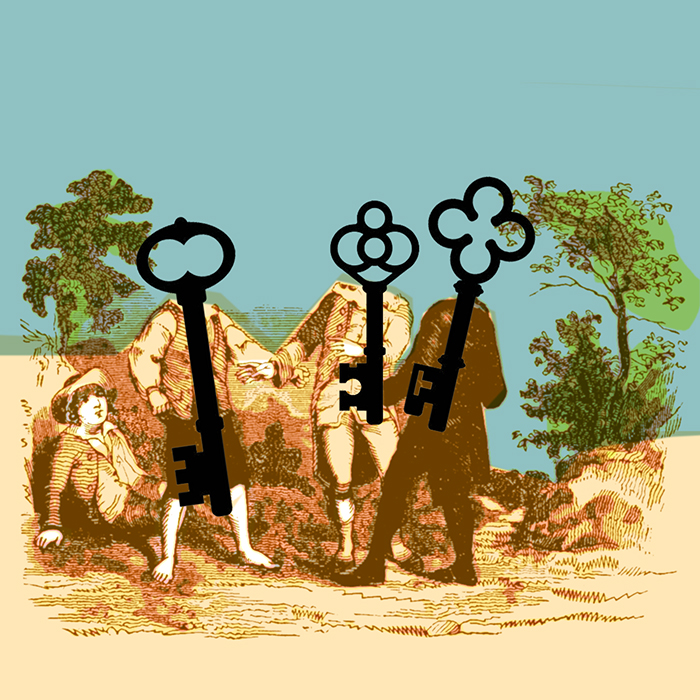
Laws protect the right to privacy, but “privacy” is also a cultural and situated concept. Protecting this right is thus not just a legal obligation but also a pivotal relational tool for building interpersonal trust. For this reason, confidentiality and sensitivity in respecting private areas of personal stories are crucial skills in creating an effective relationship with families and kids.
Professionals must be aware of the general legal framework ruling privacy issues of the country where they work. However, since the concepts of “privacy” and “private sphere” are culturally informed, one mustn’t take for granted a shared understanding of their meaning, the forms and boundaries that privacy should take, and the practices to respect it. The key issues in this respect concern:
Children entering a new school might be looked at with curiosity by their peers. At the same time, school staff perceives the importance of grasping their previous experiences to understand them better and use an appropriate and sensitive approach. However, developing awareness of early adverse experiences’ role in a child’s life does not mean that every teacher or professional at school should know the kids’ detailed personal history. It is crucial to consider why we consider certain information necessary and how it can improve practice. For example, information about how students are experiencing the transition to a new school and understanding what helps them feel welcomed (or uneasy) or trust other people might help build a strong sense of support. On the other hand, sharing parts of a traumatic biography is not a pure transfer of information. It is an important and delicate moment in an educational relationship that makes sense if and when it has a meaning for the student rather than just a response to a teacher’s need to fill informational gaps.
Awareness of how early adverse experiences can affect human functioning is essential for teachers to frame children’s behaviours and develop sensitivity to their needs. However, knowledge of a specific traumatic biography does not automatically lead to the development of an awareness of the problem and a capacity for case management. It can instead create a counterproductive effect, supporting prejudices and stereotypes.
Many children who live complex life paths have experienced being identified with their trauma. They have been labelled by others (“she’s the adopted one”) and lived the consequences of linear causal attributions —for example, identifying previous experiences of abuse as a cause for academic failures— that do not allow understanding and intervention. One must consider that a complex experience does not coincide with a traumatic event.
At the same time, children living adverse experiences might have scripts that correspond to social narratives they have built and told many times to judges, social workers, and doctors. They may use them to satisfy other people’s information needs while avoiding placing too much emotional pressure on themselves. Rather than pushing them to use these scripts, it is important that schools open spaces where experiences can be shared according to personal choices and feelings, using different languages throughout everyday activities (play, visual mediators, music, theatre, and more).
Children may feel shame, anxiety, guilt, or rage when asked about things they cannot deal with yet or might need to protect their families from external judgment. This need for privacy and control of one’s life can become critical in adolescence when the demand for independence from the adult world is fundamental. In such circumstances, the way of presenting oneself to the world becomes a particularly sensitive element. It is necessary to consider children’s agency in every step of their development. For example, teachers and students must discuss and share what confidentiality can mean in a context where different people care for the child. Within this framework, if something that the child has told the teacher needs to be shared with others (parents, professionals), teachers can explain to them why it could be important and in which way this information can help the child. Unless there are reasons that force the teacher to reveal the information, it is also necessary to respect the student’s will, support them in expressing their thoughts and needs, and involve them in choosing the time and the ways this information can be shared.
Sometimes, family members and caregivers never disclose vital parts of a child’s story at school. This could be for several reasons: distrust of professionals due to previous negative experiences, fear of stigmatisation, expectation that in a new context, the child can “start again”, etc.
Revealing something that might attract negative judgment or pity is not easy. Disclosure is not something that just happens. It can be seen as a relational, two-way process that results from feeling safe, being in a relationship of trust and being aware of the information’s purpose. Therefore, creating a climate of collaboration and integration between the school, caregivers and child is vital. The aim is to constantly monitor the child’s well-being in the school context. Therefore, the focus of the information exchange is not the personal story. It describes the child’s current life at school, where biographical elements provide a general interpretative framework of behavioural signals. Open communication is essential to identify personalised support strategies, shape realistic expectations, and set shared goals within the child’s reach. Sometimes, it’s also important — especially with families or pupils with a migrant background — to take time to understand the cultural meanings connected to revealing parts of the family biography with the help of cultural mediators or critical actors in the child’s network.

The BRIGHTER FUTURE project has been funded with support from the European Commission. This publication reflects the views only of the authors, and the Commission cannot be held responsible for any use which may be made of the information contained therein.
